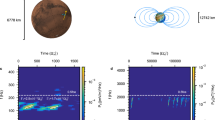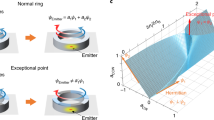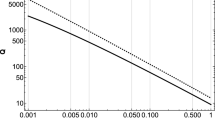Abstract
MANY observers have reported Doppler-effect heterodynes in the background of received high-frequency broadcast signals. The accepted explanation of the whistles is that waves received after reflexion from ionized meteor trails have undergone a frequency-shift, relative to the waves received by a more direct path. Usually, the pitch of the heterodyne descends to zero. Chamanlal and Venkataraman1 suggested, in 1941, that the descending pitch was the result of the meteor being rapidly retarded in velocity. More recently, Sir Edward Appleton and Mr. R. Naismith2 proposed an alternative explanation of the change of pitch, which is ascribed to the reduction of the difference between the two path-lengths that occurs as the meteor, travelling tangentially to the observer, approaches the minimum distance.
This is a preview of subscription content, access via your institution
Access options
Subscribe to this journal
Receive 51 print issues and online access
$199.00 per year
only $3.90 per issue
Buy this article
- Purchase on Springer Link
- Instant access to full article PDF
Prices may be subject to local taxes which are calculated during checkout
Similar content being viewed by others
References
Chamanlal and Venkataraman, Nature, 149, 416 (1942); summary of article in Electrotechnics (Bangalore, Nov. 1941).
Appleton, Sir Edward, and Naismith, R., Proc. Phys. Soc, 59, 461 (1947).
Author information
Authors and Affiliations
Rights and permissions
About this article
Cite this article
GRIFFITHS, H., MARTINGELL, S. & BAYLIFF, R. Meteor Whistles. Nature 161, 478–479 (1948). https://doi.org/10.1038/161478a0
Issue Date:
DOI: https://doi.org/10.1038/161478a0
Comments
By submitting a comment you agree to abide by our Terms and Community Guidelines. If you find something abusive or that does not comply with our terms or guidelines please flag it as inappropriate.



